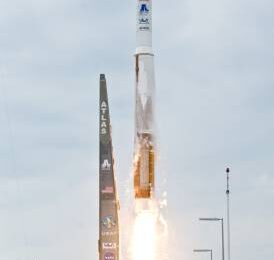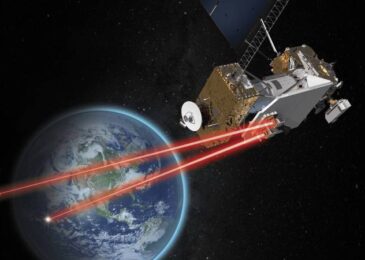The launch of a groundbreaking satellite poised to unveil celestial objects from a fresh perspective, alongside the lunar lander known as the “Moon Sniper,” has been delayed.
Originally scheduled for liftoff at 8:26 p.m. ET on Sunday, or 9:26 a.m. Japan Standard Time on Monday, adverse weather conditions—specifically, strong upper winds above the launch site—prompted the postponement less than 30 minutes prior to launch. The Japan Aerospace Exploration Agency (JAXA) reported that the Tanegashima Space Center’s launchpad reservation extends through September 15, although a new launch date has not been announced.
This marks the third rescheduling of the launch due to unfavorable weather conditions.
Named the XRISM satellite (pronounced “crism”), or the X-Ray Imaging and Spectroscopy Mission, this project represents a collaboration between JAXA, NASA, the European Space Agency, and the Canadian Space Agency.
Accompanying the satellite is JAXA’s SLIM (Smart Lander for Investigating Moon), an exploration lander designed for precise landings within a 100-meter radius, a substantial improvement over the conventional kilometer-range accuracy. The high-precision landing technology has earned the mission its nickname, Moon Sniper.
Equipped with two instruments, the XRISM satellite will study the universe’s most extreme regions, largest structures, and objects with intense gravitational forces. By detecting X-ray light, which is invisible to the human eye, the satellite aims to explore phenomena like stellar explosions and supermassive black holes.
X-rays emanate from the universe’s most energetic occurrences, making them a valuable focus of study for astronomers. Richard Kelley, the principal investigator of XRISM at NASA’s Goddard Space Flight Center, stated that the mission’s objectives encompass understanding events like stellar explosions and the particle jets emitted by supermassive black holes.
Compared to other types of light, X-rays have wavelengths so short that they can pass through mirrors designed for visible, infrared, and ultraviolet light. To accommodate X-ray detection, XRISM employs numerous curved nested mirrors. Following its launch, the satellite will require several months of calibration before becoming fully operational. The mission is designed to operate for three years.
XRISM can detect X-rays with energies ranging from 400 to 12,000 electron volts, significantly surpassing the energy levels of visible light. This broad detection range enables the study of cosmic phenomena spanning the universe.
The satellite’s instruments, Resolve and Xtend, contribute to its research efforts. Resolve focuses on minute temperature variations to determine the source, composition, movement, and physical state of X-rays. Operating at a temperature of minus 459.58 degrees Fahrenheit (minus 273.10 degrees Celsius), Resolve employs a container of liquid helium to achieve this extreme cold.
Conversely, Xtend offers XRISM a broad field of view among X-ray satellites. This instrument captures highly detailed spectra, allowing insights into challenging-to-study locations like the internal structures of neutron stars and the high-speed particle jets generated by black holes in active galaxies.
Meanwhile, the SLIM lander employs its propulsion system to journey towards the moon. Its mission timeline involves reaching lunar orbit within three to four months post-launch, spending a month orbiting the moon, followed by a descent and soft landing attempt within four to six months. If successful, the lander will briefly analyze the lunar surface.
In contrast to recent lunar lander missions targeting the south pole, SLIM aims for a location near the small lunar impact crater named Shioli, situated close to the Sea of Nectar. This site will facilitate the examination of rock compositions aiding the investigation of the moon’s origins. Notably, this site lies just south of the Sea of Tranquility, where Apollo 11’s historic landing occurred in 1969.
Recent achievements include India’s Chandrayaan-3 successfully executing a controlled landing near the lunar south pole, and Japan’s Ispace’s Hakuto-R lunar lander reaching the moon’s surface in April, albeit with a crash landing.
The SLIM probe incorporates vision-based navigation technology, a critical advancement for achieving precise moon landings. Such accuracy is vital due to the hazardous terrain of resource-rich areas, like the lunar south pole with its water ice-filled shadowed regions.
With a lightweight design, SLIM is poised to influence forthcoming missions and explorations of moons around planets such as Mars. JAXA envisions that SLIM’s success will transform missions, enabling landings at precise desired locations rather than settling for available sites.
Disclaimer: The views, suggestions, and opinions expressed here are the sole responsibility of the experts. No Digest Pulse journalist was involved in the writing and production of this article.





